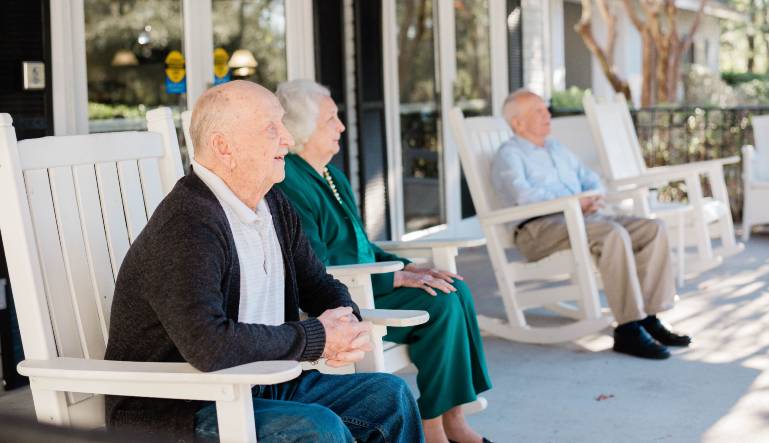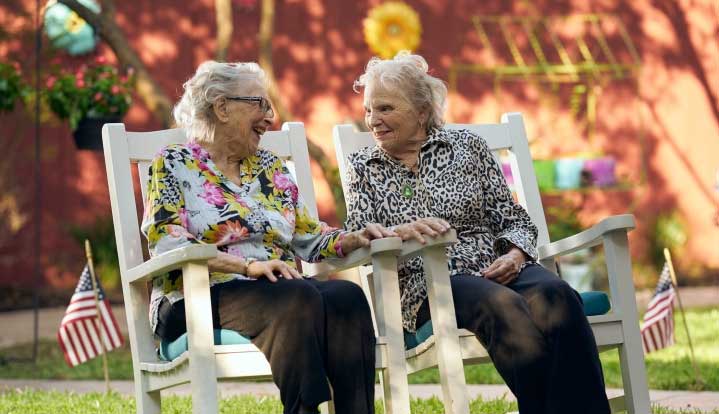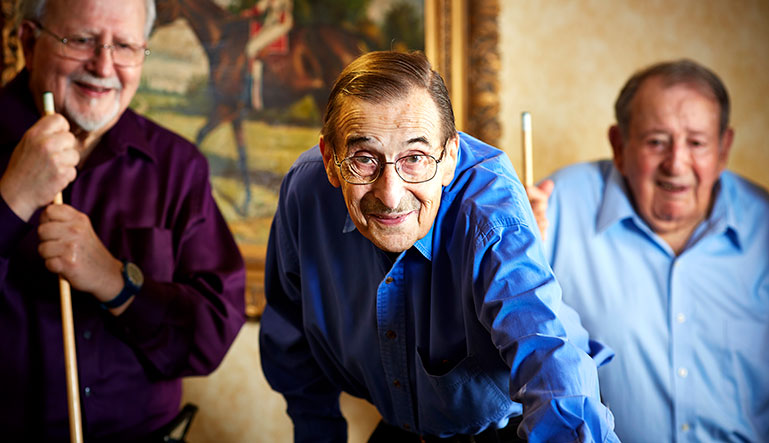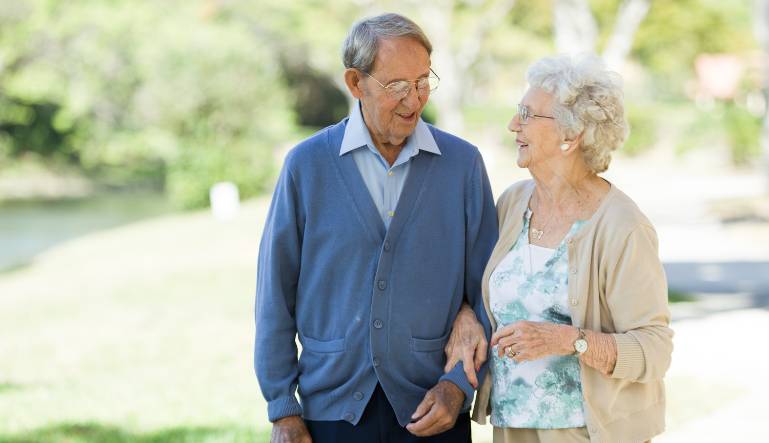Caring for a loved one with dementia or Alzheimer’s disease comes with many challenges and tough decisions. One of the first choices families face is whether to opt for memory care or home care. Both options can be essential, but they cater to different needs at different stages.
In This Article
- What is Memory Care?
- What is Home Care?
- Key Differences Between Memory Care and Home Care
- Pros and Cons of Memory Care and Home Care
- Factors to Consider When Choosing Between Memory Care and Home Care
- Memory Care at Five Star Senior Living
What is Memory Care?
Memory care is a personal approach to care for individuals with Alzheimer’s disease, dementia, or other cognitive impairments, typically found in dedicated memory care communities, like Five Star Seniors Living. These communities provide a secure environment, address unique needs, and offer 24/7 support to keep residents safe.
Memory care-specific services also provide memory activities, such as games, music therapy, art classes, and physical exercise, to stimulate cognitive functions and improve life quality. Five Star Seniors Living’s
What is Home Care?
Home care is a flexible and comforting approach to providing care for patients with Alzheimer’s or dementia. It includes personal care, medication management, and companionship. Home care aides assist with tasks like bathing, dressing, haircuts, and household chores like cooking and cleaning.
This approach helps seniors with dementia stay at home during the early stages of the disease, providing comfort and confidence. However, as the disease progresses, it will be more challenging to provide safe and adequate around-the-clock care at home.
Key Differences Between Memory Care and Home Care
It’s crucial to comprehend the main distinctions between memory care and home care before deciding.
Environment
Memory care is a structured living setting where people with dementia receive care. These communities are secure, with controlled access to prevent wandering. On the other hand, home care allows the person to stay in their familiar home environment, which can be comforting but may not be as safe as a memory care community.
Level of Care
Memory care facilities specialize in working with cognitive impairments. They provide professional and targeted memory care services and programs. Home care offers general care services tailored to the individual. However, it may not meet the higher demands of specialized care that memory care commutes and programs provide.
Social Interaction
Memory care communities can provide a socializing environment, resulting in group activities and communal living. For people with dementia, the programs’ social life component can help out significantly.
A recent study found that social interaction helps individuals with dementia maintain their mood and reduce agitation. This, in turn, improves their overall well-being. Nevertheless, people living alone in their homes may particularly feel isolated and / or lonely.
Cost
The cost of memory care is typically one flat monthly payment that covers all the needed specialized care plus housing, meals, etc. Conversely, home care would be just one of the many monthly costs of keeping a loved one in their home or yours. Additional expenses can include rent or mortgage payments, meals, home and yard maintenance, and more.
Pros and Cons of Memory Care and Home Care
|
Memory Care |
Home Care |
|
| Specialized Care | Memory care communities have qualified dementia caregivers who provide individualized care programs that effectively address cognitive impairments. | Home care services offer personalization, but often lack the specialized training that memory care communities provide. |
| Safety and Security | Memory care facilities prevent wandering and ensure the safety of residents with 24/7 supervision. | Home care can be less secure, especially if the home fails to accommodate the needs of someone with dementia. |
| Social Engagement | Memory care communities offer structured activities and social interaction, which can improve mood and reduce symptoms like agitation. | Home care can be isolating, mainly if the person lives alone, leading to fewer opportunities for socialization. |
| Comfort and Familiarity | Moving to a memory care facility can require adjusting as residents adapt to a new environment. | The individual remains in their familiar home, which can be comforting and reduce anxiety. |
| Flexibility | Memory care communities have set routines, which can benefit some but may lack flexibility. | Home care offers more flexibility, allowing tailored schedules to meet the individual’s preferences. |
| Family Involvement | Families can participate in care planning but may have less day-to-day involvement in a memory care setting. | Home care allows for greater family involvement, with family members often playing a vital role in the care process. |
Factors to Consider When Choosing Between Memory Care and Home Care
When deciding between memory care and home care, consider the following factors:
Stage of Dementia/Alzheimer’s
The severity of the disease will significantly impact the type of care needed. At the beginning of the illness, home care may be enough. However, as the condition worsens dedicated-memory care will be needed to ensure the safety and well-being of your loved one.
Family Support
Family support must be a deal-breaker (family support is a necessity). Is the family willing or able to step up and do their part of the care? If not, a memory care community can be a great option.
Cost and Financial Resources
The costs of home care and memory care can vary, so it’s important to research and determine what options are available and feasible for you and your loved one. While home care may seem like the less expensive option at first glance, it’s crucial to consider other monthly bills, potential home adjustments, and the possibility of needing more caregivers over time.
Personal Preferences
Some individuals like to stay at home and enjoy their solitude, while others may thrive from the structured and social environment of a memory care community. Personal preferences should be weighed in the decision but shouldn’t necessarily outweigh health and safety concerns.
Memory Care at Five Star Senior Living
When considering memory care, Five Star Senior Living stands out as a top choice. Our Memory Care program, which uses a Montessori approach to dementia care, is designed to create meaningful and joyful moments for residents. This program has helped establish Five Star Senior Living as a trusted provider for individuals with dementia and their families.
If you’re interested in learning more, contact us or schedule a tour of one of our senior living memory care communities. Our team is dedicated to ensuring your loved one is safe, engaged, and well-cared for in a supportive environment.






![How Much Does Assisted Living Cost? [2025]](https://www.fivestarseniorliving.com/wp-content/uploads/2022/07/cost-of-assisted-living-blog-hero.jpg?ver=1710517178)
![How Much Does Memory Care Cost? [2025]](https://www.fivestarseniorliving.com/wp-content/uploads/2022/07/i-Nvm8GsN-X3.jpg?ver=1710520827)


